Hatcher Pass Avalanche 1 Class
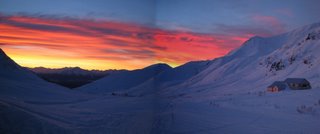
This last weekend, Andrea, Hillary, Brian, and I headed to Hatcher Pass for the Alaska Avalanche School's three-day Level 1 Backcountry Avalanche Hazard Evaluation and Rescue Class. The school is run by Nancy Pfeiffer, a long-time Alaska resident who took the reigns at AAS in the last couple years.
Overall, the course was an amazing eye-opener for all of us. As with all outdoor/backcountry education, the avalanche classes illustrated how a little more knowledge about your environment, gear, or technique can dramatically change your outlook on the backcountry experience. I can honestly say that for the four of us, we will never look at snow-covered slopes the way we once did.
The class is three full days and consists of classroom and field work. Because of the late sunrise, classes started at 8 and went until around 10:30. We spent the rest of the day (until 4:30) in the field. Then it was back to the classroom until 7. We stayed at the visitor center at the mine, 22 or so people sleeping on the floor. It reminded me of a cross between European mountain huts and junior high summer camp. It was lights out every night at 10.
Day one is beacon training, learning how to use your beacon and probe and how to conduct single-burial and multiple-burial searches. Nancy ran our group this day. Multiple-burial scenarios turned out to be the most difficult because more than one beacon is transmitting and depending on the beacon you are using to find them, it can be hard to distinguish between the signals. Our group found four "victims" (backpacks with beacons in them) in just under 17 minutes at shallow burial. Considering the survival rate of an avalanche victim dips below 50% after 15 minutes of burial, it wasn't too bad (but kind of a bummer for the fourth victim).
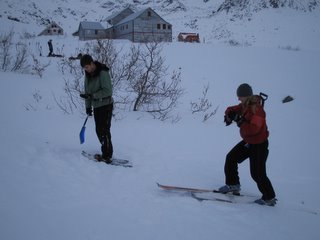
Timed beacon searches
Day two is snowpack analysis. We learned how to dig pits, conduct shovel, compression and rutschblock tests to determine the stability of the snow. Blaine Smith ran this class for my group.
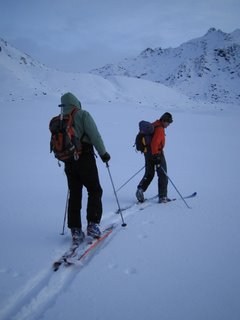
Heading out with Blaine on day 2
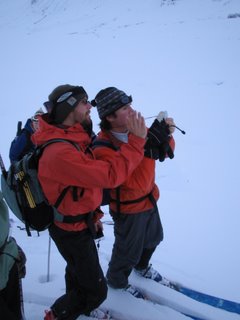
Measuring slope angle is critical to evaluating stability

Blaine illustrates how to make the walls of your snowpit straight by using your probe
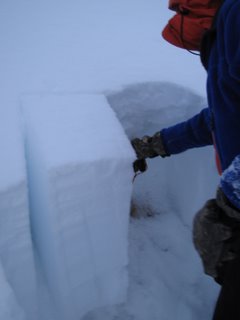
Cutting a block for a shovel compression test
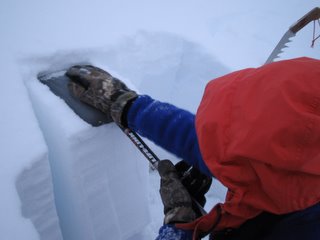
Applying pressure for the shovel compression test

Digging pits
Blaine illustrates how to fill out our pit books
Day three is terrain and route evaluation. This day each group did a short tour led by around the valley, focusing on route selection and determining when it is safe to travel through dangerous terrain. Our group, led by Kip Melling, headed up to the Gold Cord Mine then across a route called the "Death Traverse" to a bowl just below Pinnacle Peak. There was an ice crust below 3800' but once above that, the snow was soft and light and we were able to ski some nice shallow powder runs in the short December days.
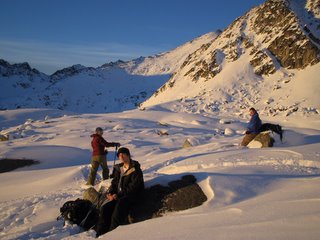
Andrea's group on their third day tour
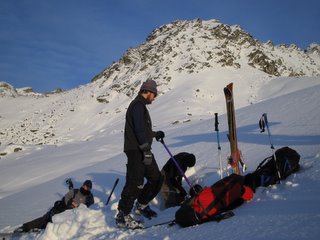
Checking stability
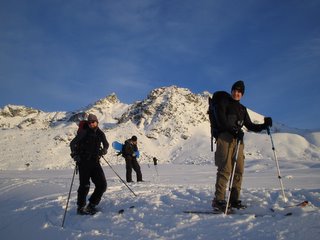
The weather over the weekend was unbelievable and some of the instructors commented how lucky we were, recalling how in years past, classes were taught at twenty below zero. Monday (the day we did our mini-tours) really took the cake for weather. The temperature was in the low 30's and the sun shone on us all five hours of our short arctic day.
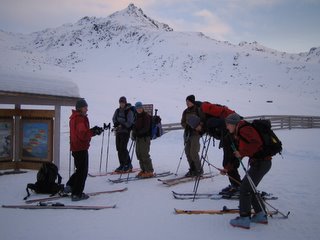
Andrea's group heading out with Nancy

Aaron and Hillary back at the lodge

Our home for three days

Hatcher Pass sunset

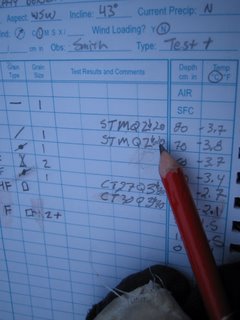

0 Comments:
Post a Comment
<< Home